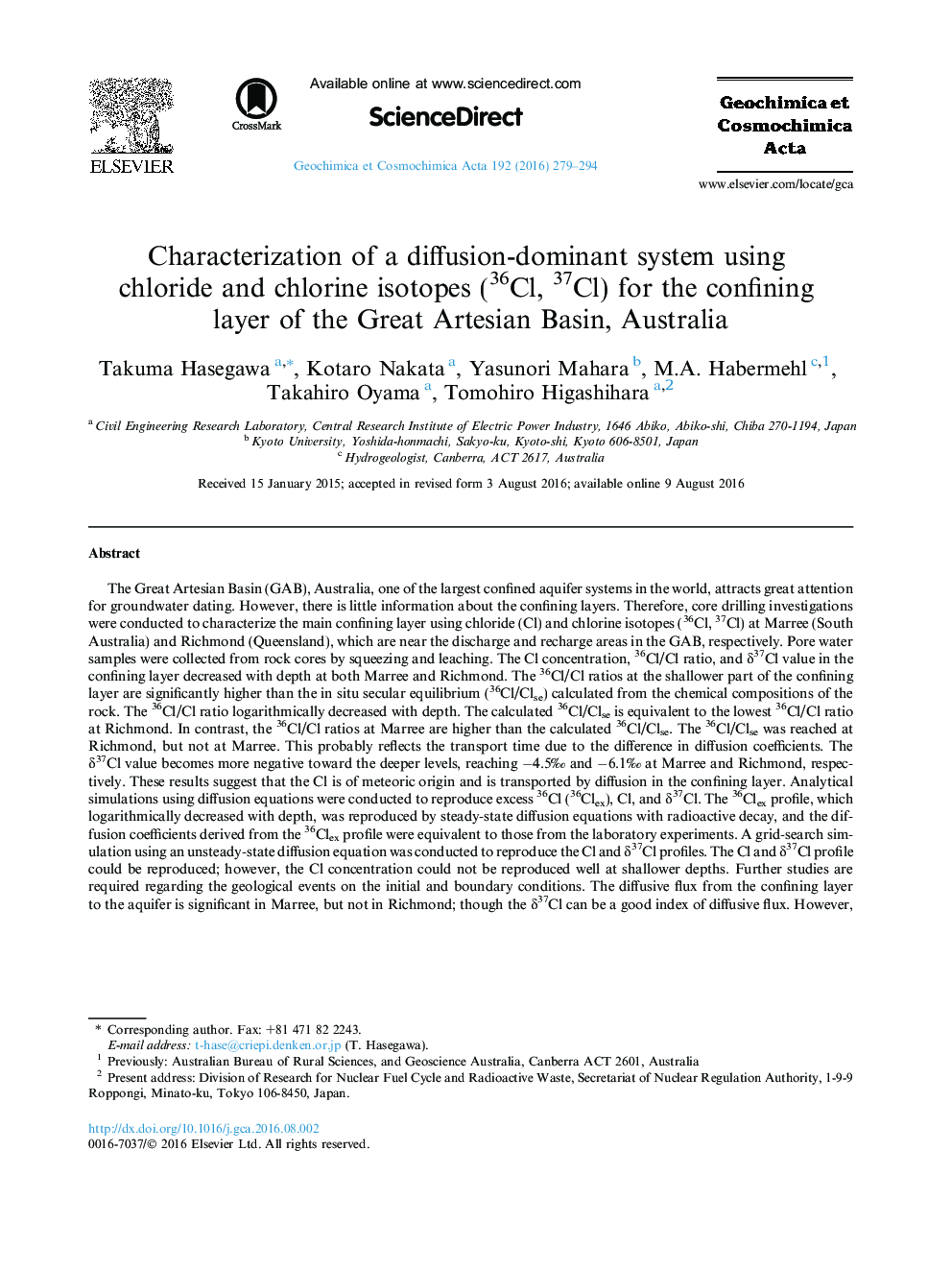| کد مقاله | کد نشریه | سال انتشار | مقاله انگلیسی | نسخه تمام متن |
|---|---|---|---|---|
| 4701733 | 1637965 | 2016 | 16 صفحه PDF | دانلود رایگان |

• The profiles of Cl and Cl isotopes were observed in aquitard in the GAB (Great Artesian Basin).
• Diffusion dominant was confirmed from the profiles of Cl and Cl isotopes.
• 36Cl was supplied at surface and transported downward by diffusion decay.
• Significant isotope fractionations for δ37Cl were observed in aquitard.
The Great Artesian Basin (GAB), Australia, one of the largest confined aquifer systems in the world, attracts great attention for groundwater dating. However, there is little information about the confining layers. Therefore, core drilling investigations were conducted to characterize the main confining layer using chloride (Cl) and chlorine isotopes (36Cl, 37Cl) at Marree (South Australia) and Richmond (Queensland), which are near the discharge and recharge areas in the GAB, respectively. Pore water samples were collected from rock cores by squeezing and leaching. The Cl concentration, 36Cl/Cl ratio, and δ37Cl value in the confining layer decreased with depth at both Marree and Richmond. The 36Cl/Cl ratios at the shallower part of the confining layer are significantly higher than the in situ secular equilibrium (36Cl/Clse) calculated from the chemical compositions of the rock. The 36Cl/Cl ratio logarithmically decreased with depth. The calculated 36Cl/Clse is equivalent to the lowest 36Cl/Cl ratio at Richmond. In contrast, the 36Cl/Cl ratios at Marree are higher than the calculated 36Cl/Clse. The 36Cl/Clse was reached at Richmond, but not at Marree. This probably reflects the transport time due to the difference in diffusion coefficients. The δ37Cl value becomes more negative toward the deeper levels, reaching −4.5‰ and −6.1‰ at Marree and Richmond, respectively. These results suggest that the Cl is of meteoric origin and is transported by diffusion in the confining layer. Analytical simulations using diffusion equations were conducted to reproduce excess 36Cl (36Clex), Cl, and δ37Cl. The 36Clex profile, which logarithmically decreased with depth, was reproduced by steady-state diffusion equations with radioactive decay, and the diffusion coefficients derived from the 36Clex profile were equivalent to those from the laboratory experiments. A grid-search simulation using an unsteady-state diffusion equation was conducted to reproduce the Cl and δ37Cl profiles. The Cl and δ37Cl profile could be reproduced; however, the Cl concentration could not be reproduced well at shallower depths. Further studies are required regarding the geological events on the initial and boundary conditions. The diffusive flux from the confining layer to the aquifer is significant in Marree, but not in Richmond; though the δ37Cl can be a good index of diffusive flux. However, it is difficult to evaluate diffusive flux quantitatively when the diffusive flux is significant because it depends on the transport parameters in the confining layer. The groundwater flow in the confining layer is less than 1 × 10−5 m/y because diffusion is dominant.
Journal: Geochimica et Cosmochimica Acta - Volume 192, 1 November 2016, Pages 279–294